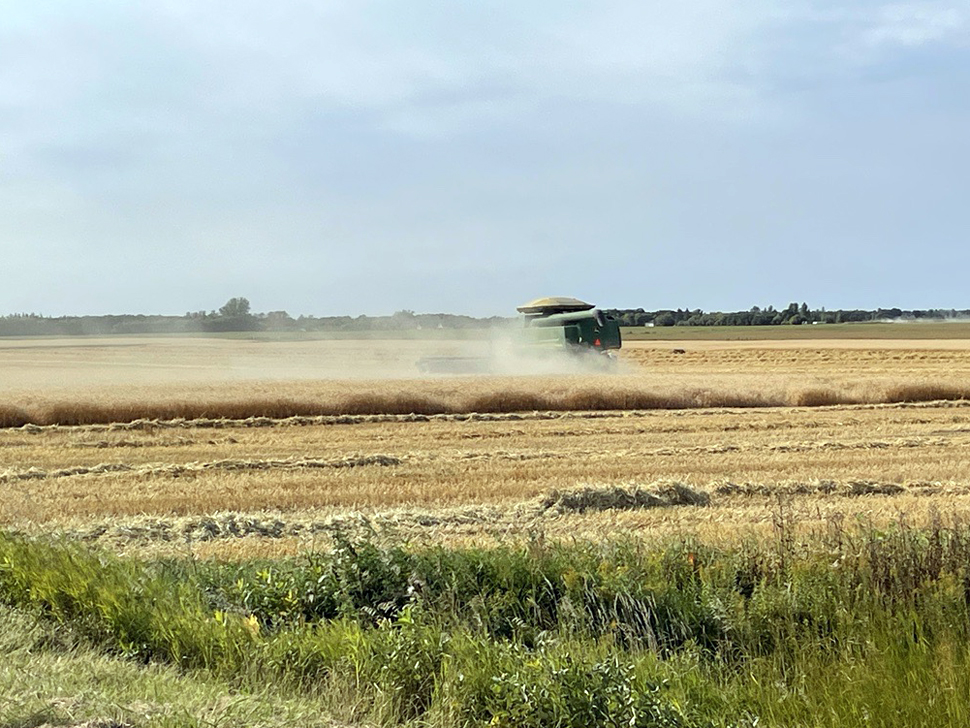Farmers are preparing for the harvest season, which is coming up soon, as the final month of summer is set to begin. They're preparing their combines, readying sprayers, and clearing out space for what they hope will be a bountiful harvest.
Southeast Agrologist Edgar Hammermeister talks about some of the latest conditions the area has seen and how that'll affect some local farmers.
"I empathize with the people making hay. July has been a little bit of a challenge because of the frequency of showers and trying to make dry hay for the cattlemen. That's been a concern, so it's hard to keep all farmers happy all the time. For the amount of moisture that we've received here, and again on a regional basis, the soil is sitting in a pretty good circumstance, and we have moisture to finish the crop here now. So if the rain stops now, I don't think anybody would complain at all."
Not all farms will kick off at the same point with their harvest, as Hammermeister says, rain has been uneven across the southeast.
"There's going to be a gradient as to when guys start, and especially West of Estevan was in the fields earlier than East and going to the Manitoba border. But we overall had a good start to the seeding season, so some of the crops will be harvested in August for sure."
The big difference that farmers are seeing this year is a cooler, wetter July, which Hammermeister says adds a lot of value for the crops.
"We had a string of hot, dry days last year that really moved the crop along quickly, and that also burned out a lot of yield potential for the 2024 year. This year, we've had a mild July. We've had the odd warm day, but overall we've had mild conditions with ample moisture. So, harvest won't really start early this year. It'll be essentially the middle of August for the pulses to start, but by September, we'll be going hard."
Hammermeister advises farmers to keep an eye on their fields during this critical spot when insects could buzz up from the south.
"Be aware that there still can be some insect pressures that can come up from the states, particularly in canola. The fall armyworm can be an issue. There are a few starting to show up a little bit, just on the North Dakota side. Diamondback moths are a very mild concern at the moment, but it's still worth paying some attention."
Drivers are reminded that once harvest starts, they're likely to see farm equipment on the roads and should slow down and be careful when passing by.
